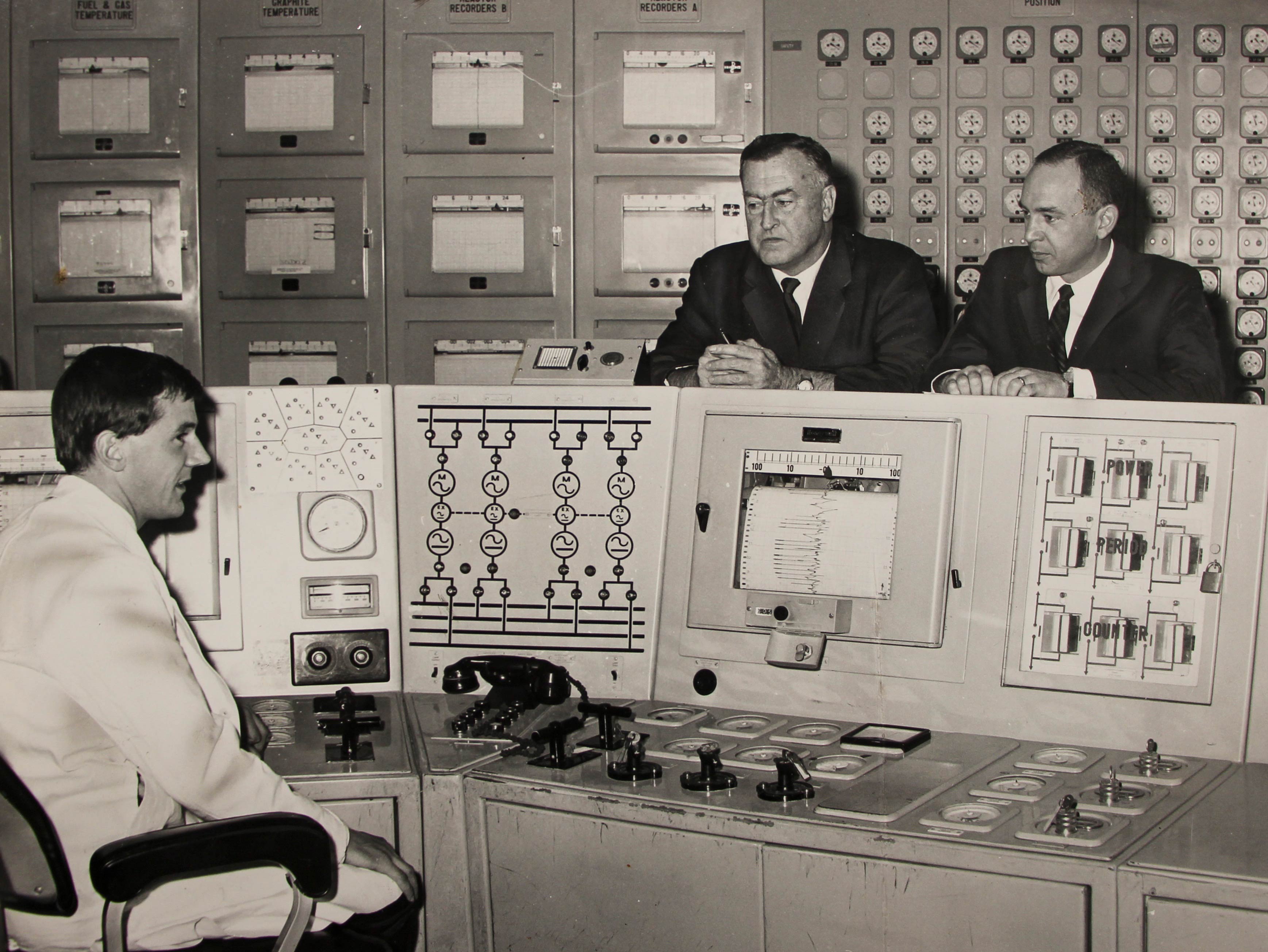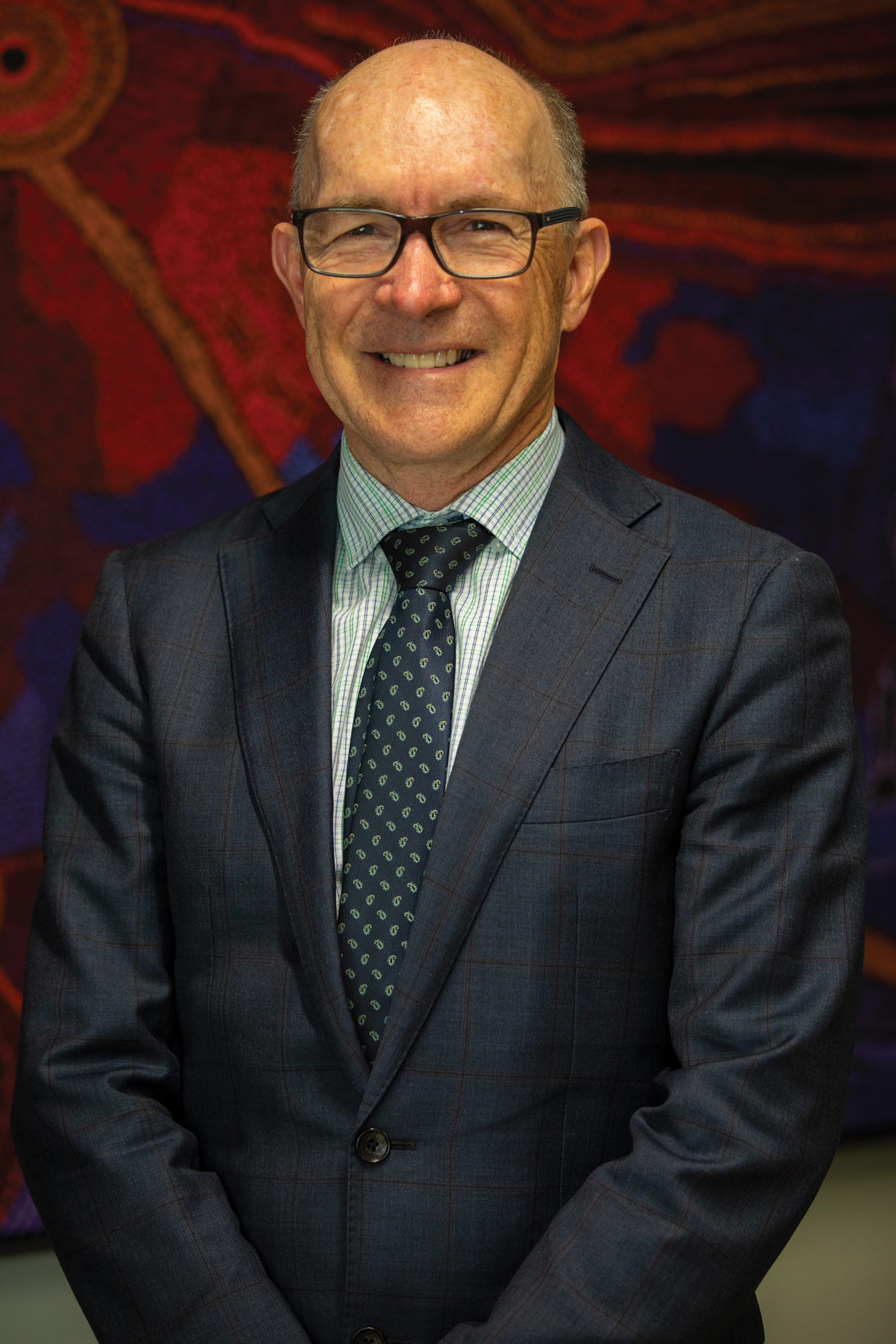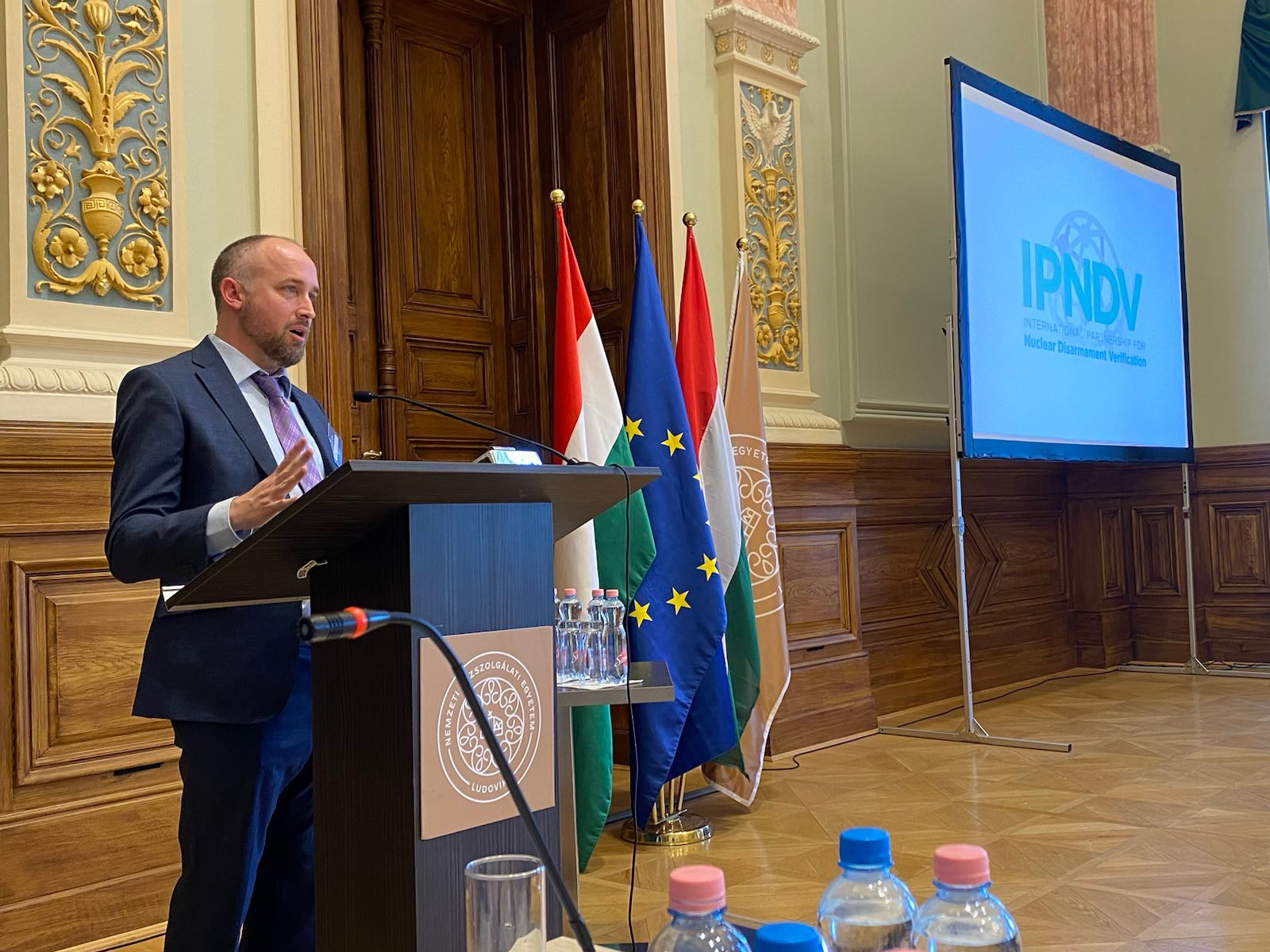
The Australian Government is now in a caretaker period in advance of the forthcoming election. Until a new government is sworn in, government operations are conducted in accordance with the
Caretaker Conventions.
Our vision is to
enhance Australia’s domestic and international security.
We do this through:
 Upholding Australia’s international non-proliferation commitments through robust domestic regulation.
Upholding Australia’s international non-proliferation commitments through robust domestic regulation.
 Supporting regional non-proliferation implementation.
Supporting regional non-proliferation implementation.
 Shaping and strengthening the global non-proliferation and disarmament verification mechanisms.
Shaping and strengthening the global non-proliferation and disarmament verification mechanisms.
View our Annual Reports
Atomic Energy Act establishes the Australian Atomic Energy Commission.
Agreement for Cooperation between the Government of the Commonwealth of Australia and the Government of the United States of America concerning the Civil Uses of Atomic Energy is the first nuclear cooperation agreement that was signed by Australia.
International Atomic Energy Agency (IAEA) is established. Australia has been deeply involved with the agency since its inception. The first IAEA Inspector-General (equivalent to Deputy Director-General IAEA) was an Australian, Allan McKnight, working as Inspector-General IAEA from 1964-68.

Australia's first research reactor, HIFAR, goes critical.

Australia’s first International Atomic Energy Agency safeguards agreement covering the HIFAR reactor enters into force.
Australia signs the Treaty on the Non-Proliferation of Nuclear Weapons (NPT).

Australia ratifies the Treaty on the Non-Proliferation of Nuclear Weapons.
Australian Comprehensive Safeguards Agreement (CSA) with the IAEA for the application of safeguards enters into force.
The Australian Safeguards Office (ASO) is established to implement the CSA.

Australia's uranium export policy is introduced to ensure that Australian uranium exports remain exclusively for peaceful use. This is managed under Australia’s bilateral nuclear cooperation agreements.
ASO Officer is appointed to the Standing Advisory Group on Safeguards Implementation (SAGSI), a position we have continued to this day. SAGSI provides advice directly to Director-General IAEA.
The Australian Safeguards Support Program is established with the IAEA. This program, managed by the Australian Safeguards Office, was one of the first IAEA support programs.
Australia signs the Convention on the Physical Protection of Nuclear Material.
The first Australian and IAEA co-hosted regional nuclear safeguards training course. Participants included: Indonesia, Malaysia, Republic of Korea, Democratic People's Republic of Korea, China, Japan, the Philippines, Thailand and Vietnam.
11 December 1986
The South Pacific Nuclear Free Zone Treaty (Treaty of Rarotonga) enters into force.
ASO becomes part of the new Primary Industries and Energy portfolio.
31 March 1987
Nuclear Non-Proliferation (Safeguards) Act 1987 is enacted. This provides the legislative basis for the Australian Safeguards Office functions. Establishes the position of Director of Safeguards as an independent statutory officer.
13 September 1987
Frank Bett is appointed first Director of Safeguards by Governor-General Ninian Stephen.
22 September 1987
Australia ratifies the Convention on the Physical Protection of Nuclear Material.
John Carlson is appointed Director of Safeguards by Governor-General Bill Hayden.

Australian Safeguards Office relocates from Sydney to Canberra.
The "Program 93+2" to strengthen safeguards is initiated by the IAEA and its Member States. The ASO leads Australia's efforts both in negotiating and testing technologies and is instrumental in culminating the Additional Protocol.
13 January 1993
Chemical Weapons Convention signed by Australia.

Australia ratifies the Chemical Weapons Convention.
June 1994
The Australian Safeguards Office is transferred to the Department of Foreign Affairs and Trade.

Creation of the Chemical Weapons Convention Office within the Australian Safeguards Office.
Australia signs the Comprehensive Nuclear-Test-Ban Treaty.
The Comprehensive Nuclear-Test-Ban Treaty Office is established within the Australian Safeguards Office.
Chemical Weapons Convention entered into force for Australia, ASNO is responsible for national implementation.
12 December 1997
Australia is the first country to sign and bring into force an International Atomic Energy Agency Additional Protocol agreement that strengthens safeguards.
Australian Safeguards and Non-Proliferation Office (ASNO) is established, combining the Australian Safeguards Office, Chemical Weapons Convention Office and Australian Comprehensive Nuclear-Test-Ban Treaty Office.
John Carlson appointed Director General ASNO by Governor-General William Deane.

Australia is the first state to obtain the International Atomic Energy Agency’s highest level Broader Conclusion for safeguards compliance which declares that ‘all nuclear material remain in peaceful activities’– a status we have retained every year since.
23 June 1999
The first complementary access inspection by the International Atomic Energy Agency is held in Australia. This was closely followed by the first such IAEA inspection at a uranium mine.
Australia passes the Nuclear Non-Proliferation Legislation Amendment Act 2003 formalising the Australian Safeguards and Non-Proliferation Office.
Australia's current research reactor, OPAL, begins operation at Lucas Heights.

Permanent shut down of HIFAR.
Australia ratifies the Amended Convention on the Physical Protection of Nuclear Material.
The Asia-Pacific Safeguards Network (APSN) is established. ASNO was the first chair of APSN.

Robert Floyd is appointed Director General ASNO by Governor-General Quentin Bryce.

Australia ranks #1 in the first release of the Nuclear Security Index, published by the Nuclear Threat Initiative.
ASNO joins the International Atomic Energy Agency’s newly established Nuclear Security Guidance Committee to oversee production and updating of nuclear security guidance documents for member states. ASNO continues to be a major contributor to this work.
Australia, via ASNO, joins the International Partnership for Nuclear Disarmament Verification (IPNDV) and has been an active contributor since its inception in 2014.

The Amended Convention on the Physical Protection of Nuclear Material enters into force.

Australia completes installation of all of Australia’s CTBT International Monitoring Station facilities. These stations are instrumental in detecting North Korea’s nuclear weapons testing progress.
Australia, the United Kingdom and the United States announce AUKUS Pillar 1. This was a decision that supported Australia in acquiring conventionally armed, nuclear-powered submarines.
9 December 2021
Dr Geoffrey Shaw appointed Director General ASNO by Governor-General David Hurley.
AUKUS announces the optimal pathway for Australia's acquisition of a conventionally armed nuclear-powered submarine capability.
May 2023
ASNO is leading negotiations with the International Atomic Energy Agency on safeguards arrangements under Australia's CSA for Australia's nuclear-powered submarine program.
7 July 2023
The Organization for the Prohibition of Chemical Weapons announces 100% of chemical weapons stockpiles declared by possessor states have been destroyed under the organisation's verification.
ASNO launches Verify, a program focusing on strengthening International Atomic Energy Agency safeguards and building Australian capabilities to support Australia's acquisition of nuclear powered submarines.
10 July 2024
Celebrating 50 years of safeguarding Australia's nuclear activities!
ASNO continues to work with regional partners on non-proliferation treaty implementation.